Thursday, 29 December 2011
God I love religion
its almost like a scene from Monty Python's life of brian
while on the subject I liked the other news of the Croc snagging a lawnmower of the Gardner
seems to have cost the croc a tooth too ... oh well, hopefully they have a dentist
Friday, 23 December 2011
Merry Christmas
In Finland the Finnish for Merry Christmas is Hyvää Joulua.

The above image was taken by me one winter in Finland with the most amazing ice crystal growth (frost) formations leaving little spikes of ice all over the place.
Of course I'm in Australia again these days so the White Christmas is just a thing of days gone by for now.
Anyway, I'd like to wish you all the best for this period, stay safe and may the new year bring you health and prosperity.
Sunday, 18 December 2011
My local little bit of bush
One of the things about living in the same house for 40 years is that you get to see changes in the local area. Some for the worse others for the better.
At the bottom of my hill is a small creek and a bit of bushland. This bank of the creek was actually used by the railway that once connected Southport to Brisbane (till it was closed, but that's another story of political corruption, not today).
When I was a kid this little strip of bush was just that. Naturally it also looked a bit scraggly too. It was none the less fun to play in.
About 10 years ago (while I was living in asia) some locals got together and tried to clean it up by clearing out dumped rubbish, ripping out some of the feral weeds. Now the place is looking almost like a park. The old railway line forms a natural path through the strip of bush and there are markers to aid in learning a bit about what species is what.
Its so nice to see this all being done in what is essentially the commons, not someone's back yard
Hats off to my community members
(posted from my mobile while doing some walking around)
Thursday, 15 December 2011
on ya bike
Sadly Australia is now about one of the most negative nations on earth with respect to bicycles. This issue was recently raised by Tour rider Cadel Evans and (predictably) received significant and heated debate.
I have to ask, is Canberra the only cycling safe city in Australia?
 Its a relatively rapid, interesting and sad twist to Australian bicycling.
Its a relatively rapid, interesting and sad twist to Australian bicycling.Sadly it has become cemented into modern Australian culture that roads are for cars and bicycles are toys.
I started thinking about this again a few months ago when I saw this photo in the Finnish Press. It shows an excellent example of lateral thinking and application of pedal power to get around town, do some shopping AND take your kids with you.
Its almost tragic that a country such as Australia which regards itself as being an outdoor country is rapidly becoming an indoor and inside cars only country.
I lived in Finland for some years, and no matter what the weather, people would be outside walking, pushing kids in prams and riding bicycles. Unsurprisingly those people looked much healthier than the couch and car bound ones.
Recently one of the Bloggers I like to read did an interesting piece on the economics of bike lanes. While Cameron is a keen bicycle rider too (a real life one, not just morning lycra cafe set) his analysis seemed to show that having a healthier population did not actually give a net health cost benefit. Strangely because people seemed to be living longer lives. So this "James Dean" economic outcome (live hard, die young, leave a good looking corpse) demonstrates to me some of the shortfalls in using Economics to attempt to justify human activity.
Avoiding getting into issues like externalities and choice of metrics I'll steer back onto the course of bicycles and say that in Australia we are now facing greater and greater commuting times, more congested roads and many other negatives which I strongly feel are associated with our addiction to cars. Without doubt cars are great tools for a purpose ... but would you cut up your steak with a chainsaw?
I almost feel that we are missing out on some sort of innovation with our focus on cars too. As when last in Sweden I noticed this bicycle courier ...

I thought when I saw it "what a cunning and interesting design" ... don't see stuff like that in Australia. Heck even getting mudguards on a bike is hard now.
So while Holden has introduced an new electric car called the "Volt" that is expected to cost something like $50,000 one would have to ask why more people don't just spend $500 buy a decent bicycle and ride to work?
I know when I did (back in the 90's) I actually saved something like $6000 a year in vehicle costs (fuel, tyres, services) and got fitter to boot!
If enough of you get on yer bikes I reckon that it'll start to turn the social attitudes around and take bicycle riding in Australia from a "funny fad" back to real transport again.
Here's to that
Tuesday, 13 December 2011
taste varies
This morning on the way back from my blood tests I spotted this outfit in a shop window (heaps of reflection on the glass, so quick n dirty photoshop work to make the suit stand out better)

and the shoes ....

Oh Lord, one has to either be the fashion equivalent of tone deaf for this one. Either that or have never ever seen those photographs of relatives wearing funny stuff and said "oh my god uncle bill, what were you thinking...
Sunday, 11 December 2011
Back yard Sunday
Its good to be feeling better.
Tuesday, 29 November 2011
backup and recovery

Things are looking up now. Out of postop and in the ward now.
so now all the backups I've done so far in terms of personal health and fitness are helping me with recovery
Tuesday, 22 November 2011
the heart of the matter
There has been a lot of development in the area of Artificial Heart Valves over the years, which is good cos some of the early models were a bit clunky.
I'm hoping that the surgeon chooses to implant the On-X valve for me, which unlike many others is made of carbon and has some unique and interesting properties (such as coagulation properties).

The other choice that the surgeon seems to be considering will be the one from ATS Medical (also pyrolytic carbon). Since he (rather than me) has more experience in this matter (implanting valves) I'll be relying on him to make the final choice "when he's in there and sees what he finds".
I anticipate that I'll be back and able to continue my life (and my blog) in a few weeks.
Part of writing this is to express that I'm often disappointed to see people who are slack arsed lazy wastes of skin, doing nothing with their lives and often just abusing their bodies and wasting their good health.
Life for me has been a battle to have what I want and do what I want, so I take nothing for granted and revel in every success. You see I was born with an Aortic valve which did not "split" properly at embryonic development (commonly called a bicuspid aorta). So I had my first surgery (open heart surgery) when I was about 11. In this surgery they attempted to repair my valve.
This lasted till I was about 28 and rapid deterioration of my valve led to another surgery where I received a transplant from someone else. That lasted for nearly twenty years, during which time I've been lucky enough to enjoy good health (through hard work, careful training and a stubborn attitude), develop my self (though education and experience) work in interesting places and travel around the world.
My message to you today is to take your life by the neck and get out of it everything you ever wanted. Don't sit on your arse with your finger in your navel, get up and live it. When I was younger the surgeons and doctors regularly told me (and my parents) to be careful, not over exert myself and to live within my limits. My reaction to this was to know what my limits were and actively and intelligently pursue what they were.
Unlike most kids of 10 I was introduced to the concept that I could be dead quite early on. I think that it was something quite formative for my personality and my view on life. Life IS what you make it, sure you may get dealt a bum hand now n then, but play your cards to the best you can and go for it.
I know while I prepare to go to the hospital I'll be thinking of the wonderful things I've been lucky to share and experience
Norway
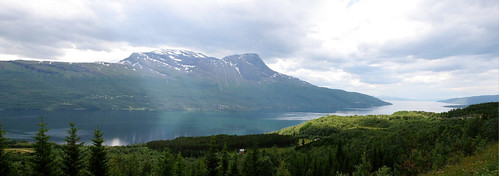
Finland

India

and heaps of other places which are too numerous to mention here...
So my goal now will be to recover my health so I can spend time with my lovely wife

and get out with friends taking photographs of the beautiful world we live in...

So my message in this blog post is to encourage you all who read this don't be limited by your perceptions and go out and live life while you're alive

(hope to) see you next week
Wednesday, 16 November 2011
phone plan data charging: things you should keep in mind
I recently changed my phone plan from "pay as you go" with 5c per MegaByte(MB) of data and free "social media" (meaning facebook, twitter, ebay and foursqare {which I've never used}) to an "unlimited" phone plan where they toss in 4Gig of data (along with unlimited phone calls.
At first I thought that 4Gig would be quite a decent amount, but after my first day on the plan (looking at my logs and theirs) I saw I used 16MB of data. So it became clear that I might actually consume that billable amount (which is not the same as using that amount) if I wasn't careful.
You see, as soon as you change from "billed" content to "free" content it resets the counter of one MB back at the phone company, clocks up a MB to you and starts the counter going again ... even if you've only used far less than a MB.
Take this example I set up to demonstrate this. I started a connection on "free" check facebook and then look at some eBay auctions and then went to a paid service (gmail) using a tiny amount of DATA (like 0.1MB) then dropped off. I was curious to see if it generated a second charge.
all in all the phone registered that I was liable for 0.842 of a MB

my bill on the other hand showed that I'd clocked up 2 MB; one of free and one of counted towards my 4Gig of data.

You may say "that's right and proper, as you shouldn't be charged for the free stuff".
Well that may be, but if I'm going to be buying a MB of data (or using my allocation of it) then I'd like to get what I use. Considering that I didn't even use a whole MB in my entire session what was the point of giving me free what I'd already paid for?
But it gets worse, imagine that you make a longer connection period:
- check your mail
- have a look at face book
- your email app checks your mail again
- you pop over to twitter check thing out and make a few tweets
- your email app checks your mail in the background
- you quickly check that status of an auction
- read the news and do some general surfing
You'd actually clock up less than 3MB of data but be liable for 4

If you have Skype or some other app running in the background it could actually be a lot worse than this over the course of a day.
Suddenly 4Gig doesn't sound so generous, and the "free stuff" is actually costing you.
So when I was "pay as I go" I only used the "free stuff" on the 3G phone data and did the "charged stuff" on my WiFi ... now I do the opposite, and actually find myself not wanting to touch the "free stuff" because it costs me.
Friday, 11 November 2011
cunning apps for photographers
Many of these functionalities (although not all) have found their way onto phones now (as the new PDA's) as well as some interesting ones.
Today I heard about this one:
The Photographer's Ephemeris
Which allows photographers to check out when the shadows will be in a place at at time.

In the past I used one on my palm pilot which simply showed where the sun or moon would be at any given time (it was a star chart) and you could sort it out for yourself.
Its sort of nice that the software systems we have now make it even easier to overlay maps of locations and this information for you, so you don't need to have a map of the area (or a compas with you) when planning things.
But you know, often we don't get the opportunity to plan, and have to make the most of what's there when we're there. So in situations where the sun isn't in exactly the right place ...

you can use a few tools like HDRI to at least make the most of the lighting you have.
Tuesday, 8 November 2011
economic booms
Explosions are often about short destructive forces.
Combustion is about burning stuff, things like the "internal combustion engine" come to mind where small amounts of the stuff is burnt at a time to produce ongoing energy from a small amount of fuel.

Efficient engineering can get excellent amounts of useful energy from a small amount of fuel. You can drive a modern car for 20Km on a litre of fuel ...
Or the same litre of fuel can be used to make a boom in something like a molotov cocktail

Which makes an effective cheap weapon to get your way, but has mainly only destruction as its outcome.
So why is any responsible Government trying to facilitate a resources boom in Australia rather than turn this into an engine for sustainable development for years to come? The ore will always be needed and likely as not the coal too.
I think that the only answer that makes sense here is that the Government is not behaving in a responsible manner and is acting like a kid with money burning a hole in its pocket.
Perhaps the electorate are too ... so why don't we tell our MP's to stop this short sighted boom stuff and start making wealth for our nation in a sustainable manner?
Thursday, 3 November 2011
one size fits all
I hear on the radio this morning that Anna Bligh (Queensland State Premier) thinks that making mining policy for Queensland should be be like that, and ignore geographic, hydrological, agricultural and demographic differences across the 1.8 Million square kilometers (715 thousand square miles).
One size fits all .. well we know how well that works for the people who buy clothes (even it it does make life easier for the suppliers).
I think its telling that rather than iterate any policy of her own she just slags the other parties. Probably because she knows in her heart after all the fuckups in Queensland she'll be out in the next election. Maybe she's been talking to Kristina Keneally?
Perhaps I should have called this post "dumb and dumber"
To Andrew I'll say "don't tie your fortunes to this boat anchor ... unless you want an albatross tied around your neck. However you do both seem to be birds of a feather.
Monday, 31 October 2011
Halloween
Now thanks to Ben I have a doll doing covers too
the details on the doll are sorta cute, with the neck bolts

and the chorus pumkin

ya gotta love that pumpkin
thanks Ben
Saturday, 29 October 2011
Scanning as neg or scanning as pos
I usually scan negative as positive and invert, the reasons are mainly that I get better control and I prefer the results I get. If you don't like to scan this way then by all means don't. If you think that you may gain something from this work flow then what follows are my reasons and some evidence.
Keep in mind that no matter what, the goal here is to produce a result that gets you a satisfactory image from your negative. If you can reliably and consistently get satisfactory results using a method then aside from learning about alternatives for "just in case" then by all means stick to the method you prefer.
Having said that I will say that over the years of scanning I have many times come back to stuff and thought "gosh, I know I can do better with that now". So if you happen to be reading this thinking about scanning your life's work of negatives once and for all just keep in mind that scaning can be a journey of learning.
You may also find the following useful links:
- quick neg scan tutorial
- using the Epson for bulk scanning of 35mm colour neg (and getting your desired settings applied across all evenly)
- registration problems on Epson scanners and why you shouldn't go too far in trying to adjust this or that because when you improve focus you may disturb registration
- using your scanner to understand film density.
- driving your scanner software differently to effect some changes in scanner side exposure on Epsons (meaning better noise characteristics in the dense areas of your negs).
- don't forget colour management on your Epson (its not where you might think it is)
- Black and White neg scanning
Firstly Methods
I thought I'd start with a slightly over exposed negative. This will exacerbate the problems associated with trying to get shadow details, especially if one follows expose for the shadows and let the highlights fall where they may. I began by setting my Epson 4870 scanner in professional mode and scanned in a variety of ways. I notice (as previously observed in this post that (among other things) scan times varied.
Below is a table of my operations and results, note the changes in scan times in different operations:
Neg as Pos
scan 1 33:95 default adjustments
scan 2 34:00 auto exposure
scan 3 45.61 manual setting, blue hard right
Neg as Neg
scan 4 42:33 auto exposure
scan 5 42:49 manual adjustment of levels
You will find the images named accordingly.
I am not certain as to why there is a scan time difference but I find that the only explanation that makes sense is that the scanner is making alterations in exposure time. Its interesting to note that the scanning of Negative as Negative results in nearly as long an extension of exposure. Previously I have noted that some extension of capture can be found into the darker areas using epson scanners by altering the scan time in the above manner. How much is not a lot, but if you want it, you may just be able to pull a little more out (again also previously discussed).
So now, lets look at some images. Please note these are hosted on Flickr, so feel free to open them in another tab for closer examination if you require.
Firstly lets work with linear data
So scanning neg as pos the first three operations give the following results. Please also note that its important to assign the correct colour profile to your scan after capture. I have mine set to EPSON ColorMatch RGB ...
Again, I prefer to set things myself because I think "never send a machine to to a humans job" (unless you want an insensitive result).
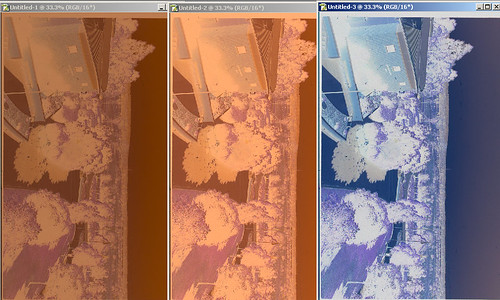
We can see perhaps there is different contrast ... so now, inverting the image
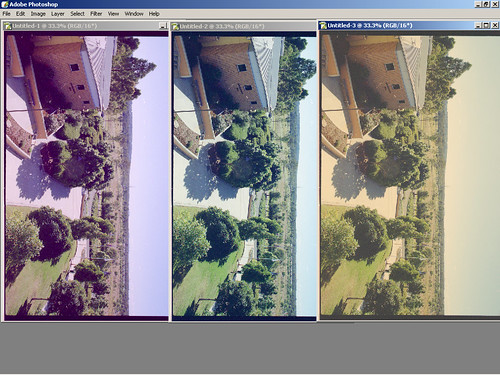
Definitely there is different contrast. Clearly we get different shadow details here ... as well as different contrast. And naturally there is different colours as I have not perfectly tweaked each image to match the other yet.
Looking into details in a area of high contrast we see this:
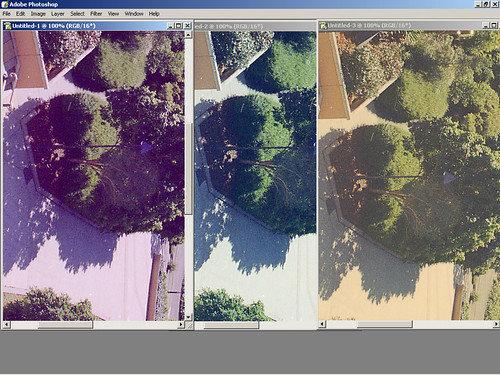
Dense and inky shadows on the two images done "default" and "Auto" but much better shadow details on the image 3. I happen to think the middle image is about right on colour.
 By setting the capture area of the scan (the black and white points) we can capture the density range that negative has. As I have mentioned before negative does not have an even or a linear response. There are some good reasons for this and its not a mistake or a design failing.
By setting the capture area of the scan (the black and white points) we can capture the density range that negative has. As I have mentioned before negative does not have an even or a linear response. There are some good reasons for this and its not a mistake or a design failing.The R G and B layers are at different density for a given exposure AND have a different range of density.
So its important to tweak that as soon as you can.
Because each film will have different response characteristics I think its essential to apply curves YOURSELF. One can use the "neg pos" software that has already pre-programmed in various films, but the last time I examined that, it resulted in a much noiser blue channel. I believe that this is not related to the software, but to the way that the scanner driver is handled and the changes that alteration can make.
Of course the linear scan is a little lacking in contrast, and so tweaking it (I only bothered with scan 3 on the right) we get a more 'natural' looking image of the scene.
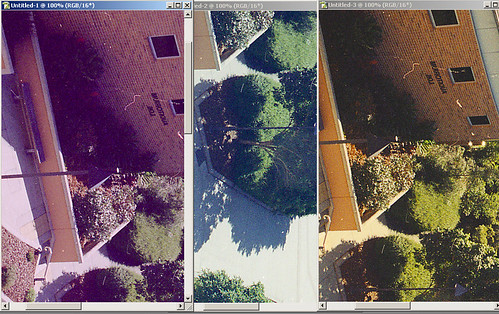
So we get a little better shadow details in the image ... but then that may not be noticeable or needed. It is however there if you did need it rather than not being there.
In my opinion this method allowed for better and more accurate setting of black point and seems to have resulted in a better output. I believe that this is related to there being more information in the "heel" of the image (dark is dense on negative) particularly in the green and definately in the blue.
Lets now look at the results of scanning negative on the negative settings
Firstly lets look at what we see in the scanner driver .. we see that the default settings leave red in the middle, and a curve being applied already
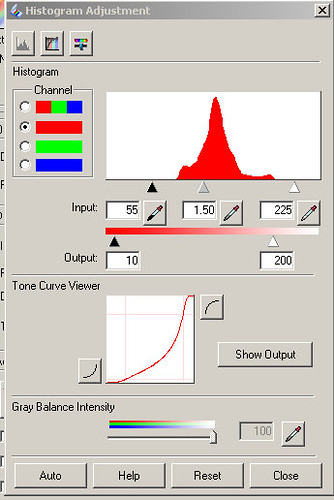
but apply a CURVE to the data which does not occur when you scan negative using the positive setting.
The more you adjust the black and white points, the steeper that curve is ... and please note that its not a linear curve. The blue now appears more moved over to the right than it did when you were viewing it as a positive.
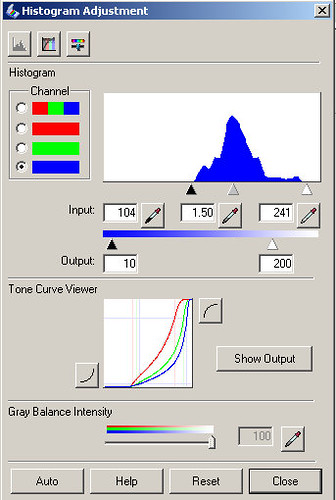
and you'll also see that the curve bellies out more ... I guess that it could be "up to you" to decide if more or less processing in the scanner driver is better or not.
Without a doubt in my mind if you are not editing this in 16 bits, do as much in the scanner as you can.
Now lets over lay these two scans on top of the other 3
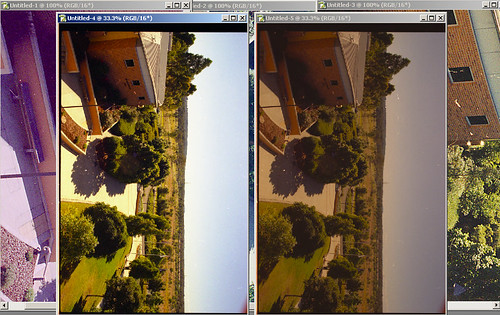
Now, looking at this I think its clear that Scan 4 (which was auto exposure) actually looks less contrasty than the Scan 5 (which I set manually) but BOTH are more contrasty and darker than the linear scan.
Perhaps you can tweak this in photoshop, but pulling the curve back out will result in loss of information due to the integer nature of the data. You can not do log maths on integters in an orthogonal way and not expect data loss.
This supports my experience that scanning negative as negative applies way to much correction to the image and throws away data which you don't want to happen. Its even worse when you look into the shadows as below.
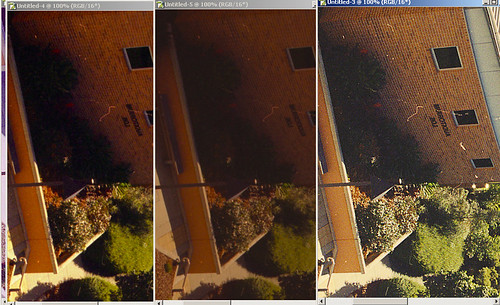
Both Scan 4 and Scan 5 are much much murkier than Scan 3 (which follows my recommended negative scanning method).
Finally
I am only reporting what I find, if you want "the truth" go to church and the preacher will tell you what to believe.
If you ask questions about my findings I'm happy to reply. I do get a little bored with the simple re-iteration of the initial question, implying I'm wrong while not providing any of your own evidence and general not reading of the posts I link to. Questions about those posts are happily answered as I am not a professional writer I may make my posts with assumptions not properly clarified.
Friday, 28 October 2011
The Nikon 1 series
The fact that the Panasonic G1 took ages to get any sort of market traction yet seems to be a screamingly better package for less money seems to cement that the Nikon is just showing what can be done with an extensive marketing network and public ignorance of what anything means.
I am tempted to believe that there may be something in the entire system, particularly with the fast AF and the availablity of interchangable lenses.

The sensor is smaller than the 4/3 (as seen above) but is still much larger than the old "pro-sumer" market of digital cameras (such as the Canon G series). Once upon a time people wanted to move towards DSLR cameras because they had a better pixel density. The less pixels per square area means that each pixel can get more light. Its sort of like carving a pizza into more slices and pretending there is more food.
The graph below shows the pixel density of successive cameras, I've started it with my 2002 model Coolpix 5000 (which is a 2/3" sensor and was a great camera in its day) and moved along towards the new Nikon 1
The Nikon has much lower pixel density than my G1 panasonic, which likely means it'll have more noise. Its interesting how we've come full circle back to where we were in 2002. I wrote this article some years back, but it seems none the less relevant now.
Perhaps Nikon is re-entering the pro-sumer market with a more capable camera (sneaking up the sensor size I mean)? Certainly when compared to the winky dink little sensors put into cameras like the Canon Powershot range (even the G12) this new 1 series will be a better performer.
But something smells badly with the marketing push IMHO.
Tuesday, 25 October 2011
SlowMo HighSpeed Jets
I'd rate this as the most boring flyover I've ever witnessed. What it lacked in quality it did make up for in quantity and duration. I guess this is what the bogans want right?
I wonder how much it cost to have that many Jets in the air for that long (and getting them all rallied together)
Monday, 24 October 2011
tracks in the sand
These are from a sand blow ... not far from this point

Its really good to be up in the early morning before people are up ... everything is quiet and you can see the tracks of those gone earlier in the day.
There's lizards up and around in the early morning

and this crab too

Saturday, 22 October 2011
Portrait lenses: 5D vs GH1
Adjective
fungible (comparative more fungible, superlative most fungible)
- (finance and commerce) Able to be substituted for something of equal value or utility; interchangeable, exchangeable.
With that definition in mind, the purpose of todays post is to explore the fungiblity of 50mm on 4/3 vs 100mm on full frame.
background
When digital SLR cameras came out I was unimpressed by the APS size sensor. I felt that it twisted lenses into something I was not used to. My fine 24mm wide angle became a middle or nothing semi-normal and my favourite normal (EF50) became some sort of half assed tele (something like 80mm which is too short IMHO). I ended up needing to buy alternative zoom lenses to cover the angles I liked and the DoF was never what I wanted.
Then I tried 4/3 and found that the x2 factor on the lenses was much more acceptable to me than the x1.6 of APS. I did find that the optical SLR viewfinder was pathetically small and so it wasn't till micro4/3 came out with the electronic viewfinders that I was fully comfortable with focus (and yes, I had a number of focus problems with APS cameras which included backfocus and front focus issues as well as inability to clearly manual focus on the small focusing screens).
Since I started using micro4/3 cameras one of the questions I have sought answers to is the ability to substitute half the focal length at 2 stops brighter and get the same thing. Back in March 2010 I made a comparison of this however I used 35mm negative, which didn't fully satisfy my interests because I still wonder about the utility of a 5D in what I photograph.
As I recently borrowed a 5D (for testing the Olympus 21mm f3.5 wide) I thought I'd do another test to satisfy my curiosity (and of course provide information for others pondering the same thing).
Too many reviews compare things with no context other than the optical one. I think that's invalid because I don't know anyone who just buys based on what the magazines say. Most people need reach into their pocket and pull out some money. So in someways there needs to be an examination of cost benefit. So lets examine some costs.
Both the GH1 and the 5D are only available now as used cameras (which to me is a good thing as they are cheaper this way, let someone else take a big depreciation hit if you can). A good used 5D body still fetches about $1000 while a good G1 about $250 and a GH1 (if you were after video as there is no other significant difference between the G1 and GH1) about $400.
The lenses uses in this test were the Canon FD 50 f1.4 and the Olympus OM100mm f2.8 - one can expect to pay about $100 for the FD50 1.4 and about $200 for the OM100mm f1.8 So one can take advantage of cheaper lenses. Because shorter lenses cost less than longer ones of equal quality and also 50mm was once a really popular focal length.
 Then there is size the 5D is about twice the dimensions of the G1
Then there is size the 5D is about twice the dimensions of the G1So not only do you pay twice as much for the 5D as you do the G1, you have to carry around twice as much of a monster.
People often discount this fact when making considerations and instead ruminate about "what makes the ultimate image".
This "ultimate image" nonsence forgets an important fact in photogaphy: if you don't have your camera with you then you can't take pictures with it.
Hmmm?
This is of course why I bought a G1 and sold most of my EOS gear back in 2009 (after much rumination and after buying the G1 and having if for some months just to be sure).
Clearly then this test is not without me having some pre-conceptions from the outset. I think its important to say that some of my preconceptions were upheld here, while others were challenged and I think its fair to say I learned something in here which I didn't expect to learn (but wondered about in another context)
examination
In this test wanted to examine how well the micro4/3 camera would hold up against a full frame camera in respect to portrait focal lengths. I chose 100mm for the focal length because I've always like it more than 135mm. Canon and Nikon and Olympus alike have all made good sharp f2.8 100mm lenses for some decades. I happen to own a Olympus OM100mm f2.8 which I think is one of the sharpest lenses ever made (the TS-E90mm would get my vote as the best) and the 135mm range is a bit patchy if you ask me. Likewise there are plenty of good 50mm lenses out there (I own a few of them) which of course makes the basis for this comparison.
So to compare a 50mm lens on micro4/3 to a 100mm on a full frame one needs to consider that to get the same DoF look and feel, you need to keep the aperture 2 stops brighter on the 4/3 camera. So in theory 50mm @ f1.4 <=> 100mm @ f2.8. But of course its not without problems because (among other things) the aspect ratio is different the 4/3 format is far more square looking than the 3/2 format of full frame.
 Notice that when covering the same width that the 4/3 gives that bit more along the top and bottom.
Notice that when covering the same width that the 4/3 gives that bit more along the top and bottom.Next I'll state that all images were taken
- in RAW
- on a tripod that didn't move
- converted using ACR 5.6 with exactly the same parameters
- exposure set by my Gossen light meter and manual setting applied to the cameras
Something which came out right away was that: if you are taking shots in full sunlight that using f1.4 is a challenge.
The shutter speed required is often exceeding what your cameras shutter will allow. For instance on a sunny 16 kind of day (like this was) I was using 4000th of a second to get f1.4 and even then was needing to have shadows as part of the picture or have a washout. Check the nuclear glow of the shirt back for instance. At 4000th of a second fill flash is out of the question too.
So it seems that fast lenses and daylight are not good friends.
So anyway now lets take a look at the images.
First the image from the Olympus 100mm at 2.8

and then the 4/3 camera with the 50mm at 1.4
 The first thing I notice is that the colour and contrast is different (there is also bokeh but that's for another post). The FD 50 when opened up to 1.4 is really soft and dull looking which influences the colour. This is clear in the 100% view below, especially where the stark contrast border between the white velcro of the cap strap borders the darkness of the hair in shadow. I would call this "blooming".
The first thing I notice is that the colour and contrast is different (there is also bokeh but that's for another post). The FD 50 when opened up to 1.4 is really soft and dull looking which influences the colour. This is clear in the 100% view below, especially where the stark contrast border between the white velcro of the cap strap borders the darkness of the hair in shadow. I would call this "blooming".
Don't get confused and think this 'flare' only exists where there is bright light, it exists all over the image area and is what serves to make the lens "low contrast".
If we now look at the OM100mm at f2.8 we see definitely better contrast.

Its interesting to note however that the outright resolution of detail between the two lenses is quite similar.
This is consistent with what pulled me away from my 10D and 20D cameras in favor of the Panasonic G1 ... it just has heaps of detail.
On that subject its a good time to observe that the 5D turns its 36x24mm capture area into 4368 x 2912 pixels while the G1 divides its (much smaller area) 18x13mm into 4000 x 3000. This means that while the outright capture of detail is quite similar the micro4/3 is actually a little more demanding of lens quality. Since the FD50 f1.4 (or in fact almost any super bright lens) has always been regarded as a little soft fully open, it translates to a bit more than that here.
So when you stop the FD50 down to f2.8 it clears up immensely
 to be more or less equal to the contrast of the Olympus 100mm lens.
to be more or less equal to the contrast of the Olympus 100mm lens.
but of course loosing that nice shallow DoF. I encourage you to open up each of the above images in a separate tab to allow you to click between tabs and see the differences jump out.
Perhaps the new Olympus 45 f1.8 lens would solve these problems and yield a lens which would
- have the contrast I find in the Olympus 100 f2.8 on full frame,
- have at least similar (if not better) sharpness
- be more compact and light weight than the FD f1.4

So you would then get the compact benefits of micro4/3 without needing to pay through the nose for smaller.
Back when micro4/3 came out there was of course no such lenses available, but the potential was there. So to actually see and explore this potential I have experimented with adapted 35mm lenses so that I can get actual experience with images, not just a theoretical idea of what I can expect.
Both lenses used in this test were designed for different cameras than the EOS series, and so need adaptors. The OM lens was made for a camera with a shorter flange distance than the EOS, but not by much. So it only has a slim adaptor. The FD being used on the micro4/3 however has a much longer adaptor because (again) the flange distance effects the design of the lens (has to clear that moving mirror).
 Paradoxically the 50mm lens actually becomes bigger than the 100mm lens when both are on their respective adaptors.
Paradoxically the 50mm lens actually becomes bigger than the 100mm lens when both are on their respective adaptors.Of course a 50mm lens does not need to have such a massive stand off on a camera without a mirror. In this photo I show the Pentax 50mm lens (far right) beside the 50mm OM lens (on adaptor).

So the new micro4/3 Olympus 45mm f1.8 is likely to be about the same size as that little pentax lens. If you happen to be interested in more compact 50mm portrait lens than the FD 50mm f1.4 I suggest you consider the little Pentax. I have reviews on them here , here and (perhaps the most interesting) here.
Of course adapted lenses lose "niceties" such as Autofocus, Face Recogntion Autofocus, auto aperture and a few other things which can be important (for people who don't know how to focus a camera or set an aperture). Since that time lenses have begun to emerge which don't cost an arm and a leg, may give better image quality and provide all the creature comforts (crutches?) for the photographer who needs them. For what its worth adapted manual focus 35mm lenses cost about ¼ of what one would pay for a modern equivalent.
However there is more interesting information available in this comparison yet. While the depth of field may be reasonably equal in a gross comparison there are some significant differences.
- The 100mm at f2.8 has a more shallow depth of field at the subject

With both images I tried to focus on the back edge of the cap. Using the magnify zoom focus assist on the GH1 it was easy to get that spot. Looking carefully its clear that the 50mm lens on the 4/3 the focus zone is much deeper even at f1.4. By the distance from the ear to the eyelashes, they are starting to go out of focus on the 100mm at f2.8 but not on the 50mm at f1.4. This means also that you won't get that on the Olympus 45 f1.8 either.
This (shallow DoF) is exactly what one wants in a classic portrait lens.
The ability to have focus sharp and defined on the eyes (my wife wanted to keep a little more privacy) but be soft by the ears or the back of the head, especially when the head is turned slightly.
Before people mention anything about pixel peeping, this sort of thing will become obvious on a 8x13 print and more so on a larger photo. Even if you don't "see it" obviously here it will be what makes it "feel better" when you examine prints.
This is not to say that the micro4/3 is bad by any stretch of the imagination. Indeed its pretty bloody good.
While playing around with these images I noticed something else, and that was the 5D also had a better dynamic range. You'll notice that the blacks in the shadows were better resolved? Thats because they had less 'noise' (as well as not being covered up by the flare)

The above are both taken at f2.8 (*where the FD lens became quite equal to the OM), the details in the shadow (arrows) are present on the 5D (right hand) while being muddy on the GH1. At the same time the highlight transition to washout (elipse) was similar. See the differences in the hair clarity in the shadows? If you were trying to dig a little into the image to pull out more shadow detail then the micro4/3 would give you a little less clear shadow detail than you'd get out of the 5D.
Lastly I thought I'd present the difference that one gets using a camera like the 5D in terms of outright printable size. The 5D image is slightly more pixels wide (4368 vs 4000), so if you were wanting to keep the aspect ratio at 3/2 then you'll get a slightly bigger print from the 5D, so printing at 300dpi from native:
- 14 inches wide at native pixels on the 5D
- 13 inches wide at native pixels on the GH1
So there is a minor increase in size of features in the picture, but personally I feel that if you wanted to print BIG or you want to capture every last skeric of detail then the 5D would do it that bit better.
Ultimately my call here is that the micro4/3 gives you 95% of the image feel and 99% of the image quality that a 5D will give. If the pursuit of that few percent advantage is worth doubling your money in buying a camera (and lenses)
PS: and now, after a long delay Part II is completed (sorry about the delays but some times life gets in the way)












